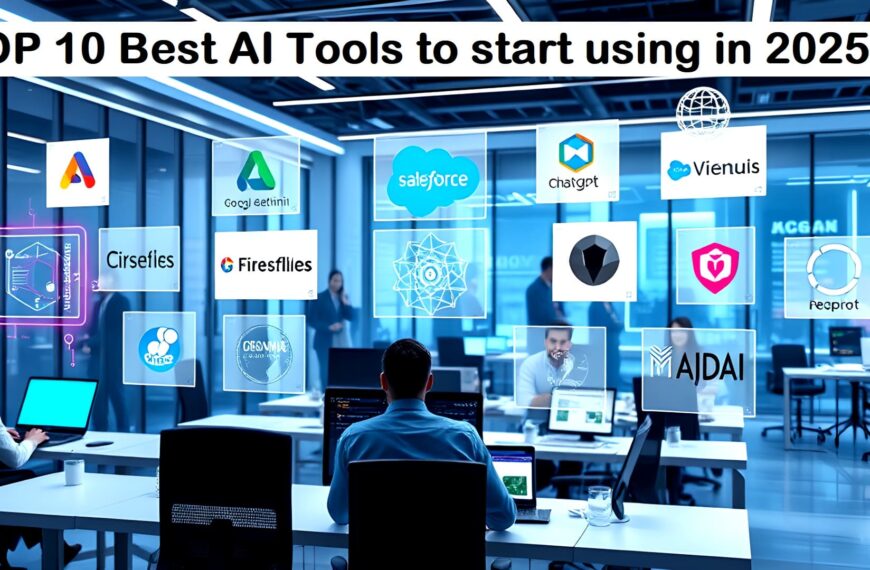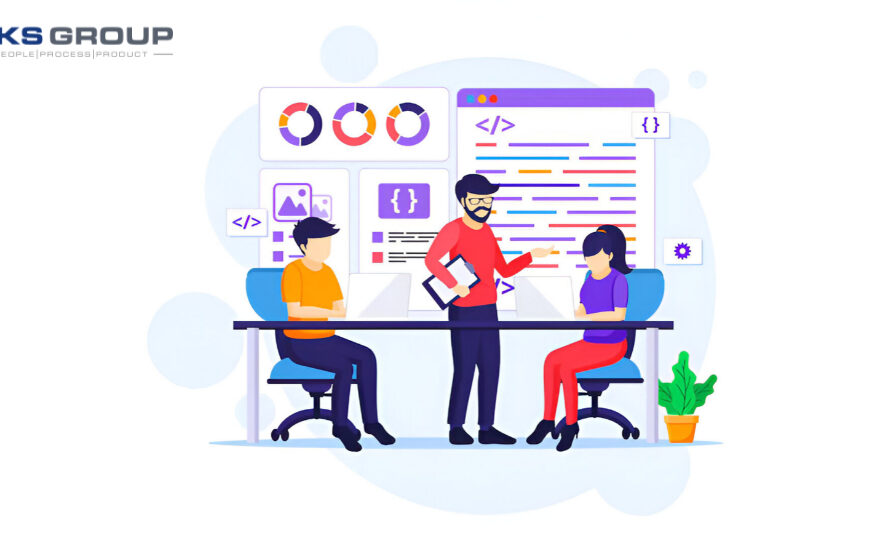Discover the top emerging IT trends shaping 2025 and beyond. From AI-driven innovations and hyper automation to sustainable technology and quantum computing, explore how the latest technology trends are revolutionizing industries.
The world of technology evolves at breakneck speed. As we move deeper into 2025 and beyond, it’s clear that IT is no longer just a support function—it’s the backbone driving innovation, growth, and transformation across industries. The latest IT trends 2025 promise to reshape industries, redefine customer experiences, and even alter the way we live and work. If you want your business to stay competitive or your career to thrive, understanding these future technology trends is absolutely essential.
1. Hyper automation: The Key to Smarter Business Operations in 2025
Hyper automation is rapidly gaining traction as one of the top strategic technology trends for organizations worldwide. Going beyond simple automation, hyper automation integrates technologies like artificial intelligence (AI), machine learning (ML), robotic process automation (RPA), and intelligent business processes to create highly autonomous systems.
Companies are increasingly investing in automation to boost productivity while reducing human intervention. The use of AI agents and new tools enables real-time decision-making and dynamic resource allocation.
Key Benefits:
- Faster, smarter decision-making
- Lower operational costs
- Increased scalability across sectors
2. Edge Computing & 5G: Revolutionizing Real-Time Data Processing
By 2025, AI will no longer be limited to backend automation or simple chatbots. It is now embedded in strategic planning, business intelligence, and customer engagement. AI and machine learning are increasingly used to predict customer behavior, personalize experiences, and improve ROI across industries.
In fields like healthcare, education, and retail, AI-powered tools are analyzing large amounts of data to drive actionable insights. Leading AI platforms are helping businesses automate complex tasks with minimal human intervention.
Key Benefits:
- Smarter forecasting and personalization
- Automation of complex processes
- Enhanced decision-making capabilities
3. Quantum Computing: Unleashing Limitless Potential for 2025 and Beyond
Edge computing is becoming increasingly indispensable with the growing use of IoT devices. Instead of relying solely on centralized cloud computing infrastructures, edge computing processes vast amounts of data closer to its source, reducing latency and enhancing real-time responsiveness.
The rollout of 5G technology—the fifth generation of mobile networks—further empowers edge computing, delivering high-speed connectivity essential for smart cities, autonomous vehicles, and remote surgeries.
Key Benefits:
- Real-time processing of large datasets
- Enhanced security through localized data handling
- Optimized connectivity and reduced bandwidth costs
4. Quantum Leap: Quantum Computing and the Future of High-Speed Problem Solving
Among the top technology trends shaping 2025, quantum computing stands out for its groundbreaking potential. With quantum computers capable of performing complex calculations exponentially faster than classical computers, industries like finance, logistics, healthcare, and cybersecurity will be transformed.
Tech companies are racing to develop scalable quantum platforms that can tackle problems involving massive datasets and complex simulations—challenges beyond the reach of conventional computers.
Key Benefits:
- Advanced cryptography and cybersecurity
- Breakthroughs in materials science and pharmaceuticals
- Optimized supply chains and financial modeling
5. Cybersecurity Mesh: A Decentralized Approach to Security
In the face of rising cyber threats, the cybersecurity landscape is shifting toward decentralized architectures like the cybersecurity mesh. This model allows organizations to enforce security policies around individual users, devices, and data, perfect for digital transformation and hybrid work models.
By 2025, the adoption of cybersecurity mesh architectures will significantly strengthen cyber resilience and help organizations prevent data breaches before they escalate.
Key Benefits:
- Protection beyond traditional firewalls
- Modular, scalable security solutions
- Faster response to evolving threats
6. Sustainable Technology: Green IT Goes Mainstream
With a global focus on climate change and sustainability, renewable energy initiatives and green IT practices are now mainstream. Organizations are adopting new and innovative technology solutions that optimize energy consumption and minimize carbon footprints.
Green data centers, eco-friendly hardware, and renewable-powered cloud platforms are examples of how tech companies are embracing sustainability goals by leveraging emerging IT technologies.
Key Benefits:
- Reduced operational costs
- Improved corporate social responsibility
- Compliance with global environmental regulations
7. Extended Reality (XR): The Future of Immersive Customer Experiences
Extended reality (XR)—which encompasses virtual reality (VR), augmented reality (AR), and mixed reality—is reshaping industries ranging from entertainment to healthcare.
In 2025, businesses will increasingly use immersive XR technologies to offer customers engaging experiences, conduct virtual meetings, and train employees in realistic simulated environments.
Key Benefits:
- Enhanced customer engagement
- Improved training and education programs
- New ways to shop, learn, and collaborate remotely
8. Blockchain Beyond Cryptocurrency: The Emerging Use Cases
Blockchain is no longer synonymous only with Bitcoin. Emerging technologies like decentralized finance (DeFi), smart contracts, and digital identity systems are fueling broader adoption across industries.
Companies are using blockchain to ensure real-time traceability in supply chains, secure digital voting, and authenticate identity without centralized servers.
Key Benefits:
- Transparent and secure record-keeping
- Enhanced trust across stakeholders
- Reduced transaction costs
9. Industry-Specific Cloud Platforms: Tailoring Cloud Solutions for 2025
Generic cloud solutions are giving way to industry cloud platforms. These specialized platforms are designed to meet the unique requirements of specific industries like healthcare, banking, manufacturing, and retail.
Such targeted platforms speed up deployments, ensure regulatory compliance, and enhance vertical-specific functionality.
Key Benefits:
- Industry-optimized solutions
- Faster compliance with industry standards
- Reduced time-to-market
10. AI-Driven Software Development: Building Smarter Applications
AI is not just helping businesses; it’s revolutionizing software engineering itself. AI-driven development tools like GitHub Copilot leverage large language models and natural language processing (NLP) to assist developers in writing cleaner, faster, and more efficient code.
With less manual coding and more automation, the entire software development lifecycle—from ideation to deployment—becomes more productive and innovative.
Key Benefits:
- Accelerated time-to-market
- Higher quality code
- Democratized access to development tools
Conclusion: Prepare to Lead the Future of Technology
The top trends highlighted in this blog showcase a future where technology trends for 2025 are intertwined with business strategies, societal transformation, and personal empowerment. As new tech trends emerge, those who proactively adapt to these trends shaping the IT landscape will be poised to lead their fields.
By embracing technologies like quantum computing, generative AI, cloud computing, 5G, and extended reality, companies can unlock new value, deliver better use cases, and reshape industries for the better.
Stay curious, stay agile, and let 2025 be the year you leverage new technology to power ahead.
Gartner predicts that organizations that innovate with emerging IT technologies will see a significant boost in ROI and industry leadership. So why wait? The future is now.















